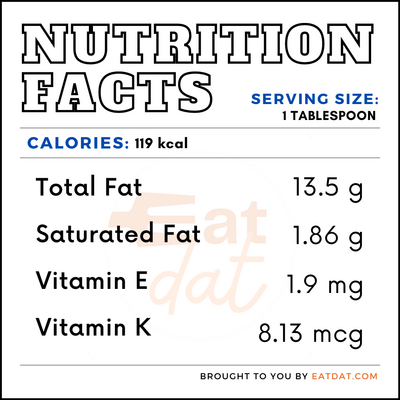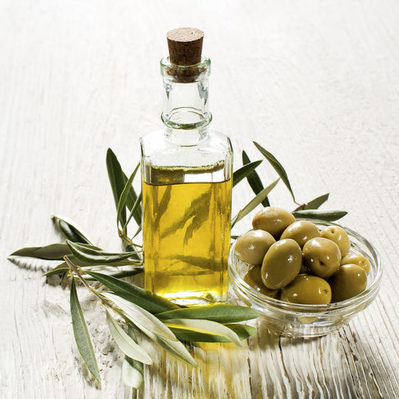The top oil-producing countries are Mediterranean countries such as Spain, Greece, Italy, Portugal, Tunisia, Morocco, France, and Egypt. The global consumption from 2019 to 2020 was 2.97 million metric tons.
The best brands in the world, according to Chef Tariq are:
- Alonso Coratina (Chile)
- Alto Vividus (Australia)
- Cape Schanck Olive Estate Frantoio (Australia)
- Denocciolato (Italy)
- Grande Escolha (Portugal)
Origin of olive oil
The olive tree has been growing in the Mediterranean region for millions of years. Olive trees were one of the first trees to be domesticated in the history of agriculture. The earliest evidence was found in Greece in the form of amphorae dating back 8,000 years. Historians believe that it originated in modern-day Turkey or Syria.
Nutrition
One tablespoon of olive oil contains:

This oil contains powerful antioxidants in the form of polyphenolic compounds, which have anticarcinogenic, anti-angiogenic, and anti-inflammatory properties. It also contains healthy fats, as well as good amounts of vitamin E and K. Other nutrients are calcium and potassium. Oleic acid makes up 55–80% of it and helps keep cholesterol and blood pressure in check. However, health benefits reduce as the processing level increases. The most beneficial type of oil is extra-virgin, while pomace oil gives the least benefits.
Commercial production
Different varieties of olives can be used in the making of oil, including:
- Mission
- Manzanillo
- Sevillano
- Arbequina
- Koroneiki
- Arbosana
- Ascolano
- Frantoio
- Leccino
- Pendolino
- Maurino
- Coratina
The International Olive Oil Council sets the standards for production. Virgin olive oils are classified as oil obtained from the fruit of the olive tree without undergoing processing that alters the product. Extra virgin olive oils are virgin oil that has oleic acid of not more than 0.80 grams per 100 grams, while virgin oil has 2 grams per 100 grams of oleic acid.
When it comes to commercial production, olives must first be harvested. Mildly ripe olives are used in production due to their sensory qualities. After harvesting, the olives are washed and prepared for pressing. For the best oil, the time span between harvesting and pressing should be less than 24 hours.
Olives are ground into a paste and mixed to release their oil. This oil is then separated from the residue, providing the best cold-pressed oil. Later, the oil is racked or separated from the sediment, and then filtered. After production, the oil is stored in stainless steel tanks with nitrogen blanketing to prevent oxidation.
Olive oil recipes
This oil is extensively used in Mediterranean cuisine. Here are a few signature recipes:
- Spaghetti Aglio e Olio
- Cake
- Imam Bayildi
- Olive Tapenade
- Moroccan Couscous
- Berkoukes Soup
- Caprese Salad
- Dip
FDA regulations
The FDA regulates the production of olives and includes it in the pickles and relishes category. According to their Code of Federal Regulations, olives are the fruit of any variety of Olea europaea, regardless of their origin or processing status. The USDA regulates the olive oil grades and defines it as the oil obtained solely from the fruit of the olive tree. The FDA ensures strict compliance with these grading requirements, as well as labeling requirements.
References
Tara Mchugh, How Olive Oil is Processed, Institute of Food Technologists, Phys.org
https://phys.org/news/2015-05-olive-oil.html
Gorzynik-Debicka, Monika et al. “Potential Health Benefits of Olive Oil and Plant Polyphenols.” International journal of molecular sciences vol. 19,3 686. 28 Feb. 2018, doi:10.3390/ijms19030686, https://www.ncbi.nlm.nih.gov/pmc/articles/PMC5877547/
Gouvinhas, Irene et al. “Critical Review on the Significance of Olive Phytochemicals in Plant Physiology and Human Health.” Molecules (Basel, Switzerland) vol. 22,11 1986. 16 Nov. 2017, doi:10.3390/molecules22111986
https://www.ncbi.nlm.nih.gov/pmc/articles/PMC6150410/

